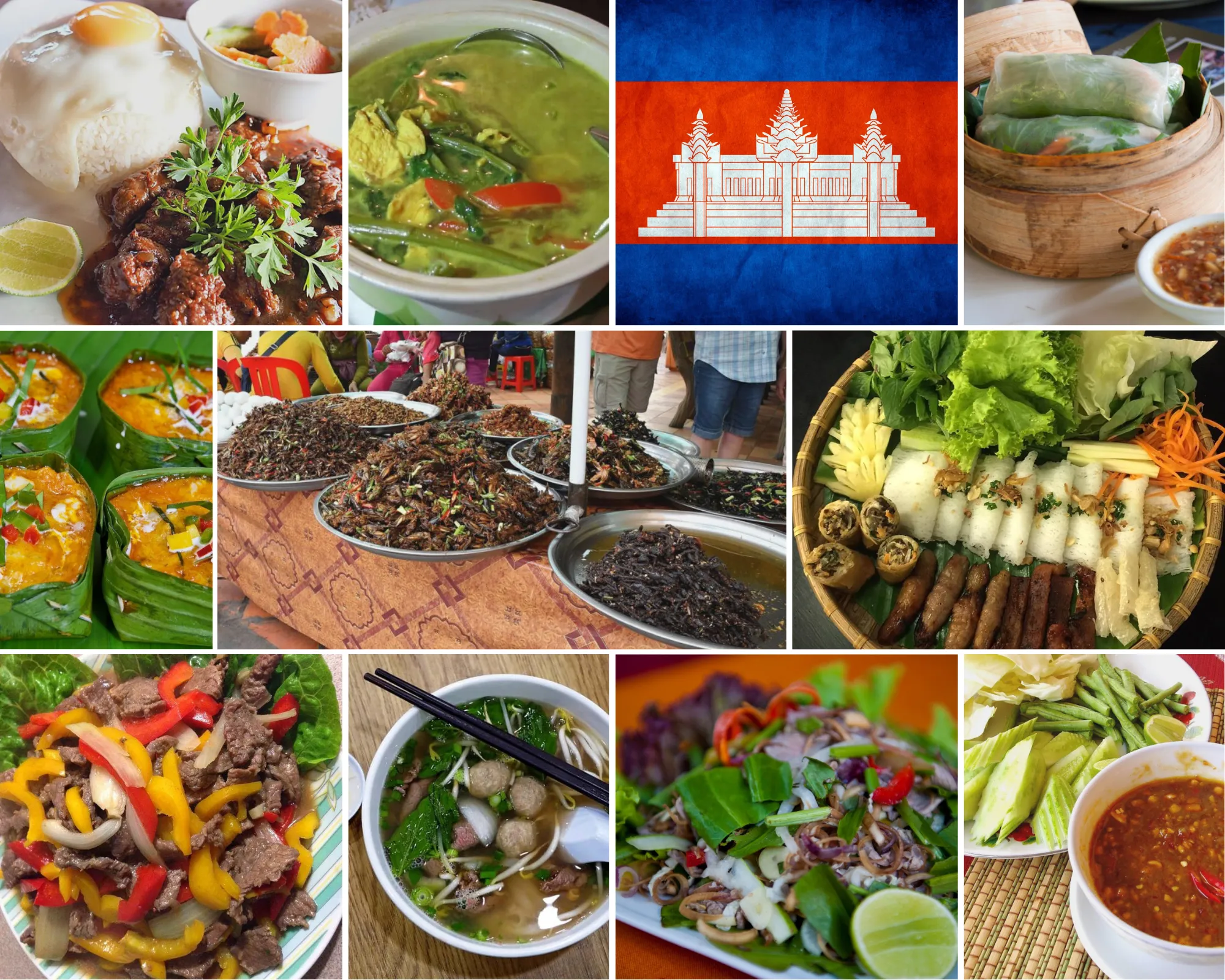
-INTERNATIONAL FOODS
Cambodian Gastronomy: Exploring the Nutritional Treasures and Vibrant Flavors

By Alison Taylor
Cambodian cuisine, known for its harmonious blend of flavors, draws inspiration from neighboring countries while retaining its distinct character. Having lived in Cambodia on and off for over 20 years, I have come to appreciate the flavor mixtures of the four S's: sweet, spicy, salty and sour.
A popular Cambodian dish is Amok, a fragrant curry made with fish or chicken, coconut milk, and a variety of aromatic herbs and spices. The unique balance of flavors, including lemongrass, galangal, and turmeric, creates a rich and satisfying taste. Another Cambodian favorite is Lok Lak, featuring tender strips of beef or chicken stir-fried with garlic, onions, and served over a bed of fresh lettuce, cucumbers, and tomatoes.
Rice is a staple in Cambodian meals, often served with a variety of condiments and side dishes. One such side dish is Prahok, a fermented fish paste that adds a distinct umami flavor to many Cambodian dishes. Fresh herbs and vegetables like kaffir lime leaves, basil, and morning glory are commonly used, providing an abundance of vitamins and minerals.
Cambodian cuisine also features delicious street food options such as Num Pang, a traditional baguette sandwich filled with grilled meat, pickled vegetables, and fresh herbs. And for those seeking a refreshing treat, the country is famous for its tropical fruits like mangoes, pineapples, and dragon fruit, which are often enjoyed fresh or incorporated into sweet desserts.
While Cambodia has a diverse culinary scene, it's worth mentioning that insects are indeed consumed as snacks in certain parts of the country. Cambodians have a long history of incorporating insects into their diet, considering them a source of protein and essential nutrients. Insects such as crickets, spiders, and cockroaches are often deep-fried or stir-fried with flavorful seasonings, creating crunchy and savory treats. These snacks are commonly found in local markets or street food stalls, where adventurous eaters can sample them. While it might seem unusual to some, insect consumption is deeply ingrained in Cambodian culture and has been practiced for generations. However, it's important to note that not all Cambodians consume insects, and it remains a niche aspect of the culinary tradition rather than a staple in everyday meals.
In conclusion, Cambodia's culinary offerings provide a unique and flavorful experience. From the aromatic curries to the vibrant street food delights, Cambodian cuisine showcases the country's rich cultural heritage and offers a delectable journey for food enthusiasts. Embrace the flavors of Cambodia and indulge in the culinary treasures this Southeast Asian nation has to offer.

BEST LIVING NOW
Taylor Global Marketing Group, LLC
Contact
E-mail: [email protected]
Phone: (209) 891-7515
© 2023 best-living-now.com - All rights reserved
This site is not a part of Google, Inc. or Google.com, nor is it sponsored or endorsed by Google. YouTube is a trademark of Google, Inc.
Disclaimer: This site is provided for educational purposes only. Please consult a health professional before implementing any strategy discussed on this website.